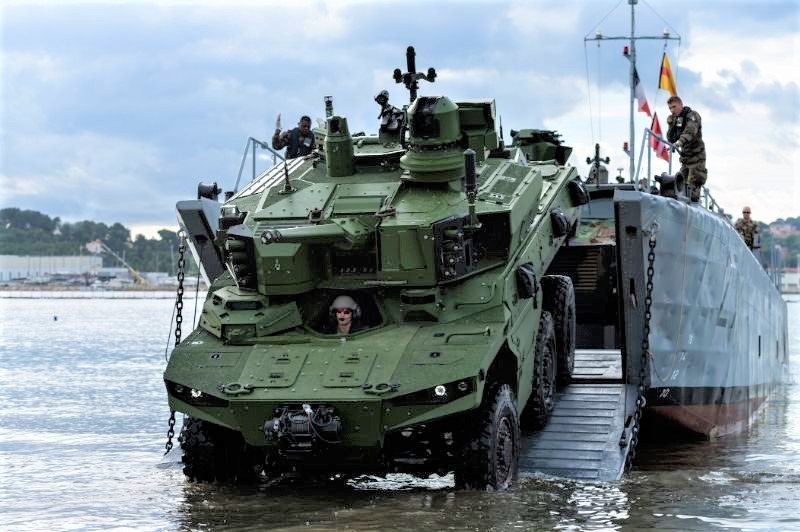Awarded to CNIM in January 2019, the EDA-S (for “engins de débarquement amphibie standards” in French) contract calls for the delivery of 14 new LCU type landing craft to replace the ageing “CTM” of the French Navy.
Talking to Naval News, Xavier Montazel, Defense & Maritime Director at CNIM, said:
“The first steel cut of the first two EDA-S took place in early October at the SOCARENAM shipyard in Saint Malo. We are set to start the builder sea trials in May or June, ahead to a delivery to the French Navy in Toulon at the end of summer of 2020”.
Montazel further explained that four more EDA-S will be delivered between the beginning and the end of 2022 for a total of six landing craft delivered to the customer as part of the first tranche. A second tranche for eight more EDA-S will follow.
Asked about the reasons for the 2 years gap between the first two vessels and the remaining four of the first tranche, Montazel explained that this gap was decided by the customer to allow the French Navy plenty of time to test and familiarize itself with the new ship to shore connector. The qualification test phase will being in the fall of 2020. This phase will include (among other things) tests with the new generation vehicles from the French Army’s Scorpion program. Once that qualification test phase completed, the French Navy may request some minor modifications in the design features of the EDA-S. If this was the case, those modifications would be applied directly to the following four landing craft, hence the two years gap…

Compared to the ageing CTM, the new EDA-S will provide the French Navy with a number of new capabilities, among which:
- Leclerc MBT capability
- Higher speed
- Better sea keeping (up to sea state 5)
- Higher payload
About CNIM’s EDA-S

Unveiled at Euronaval 2018 (under its CNIM export name “LCA Landing Craft Assault”) the EDA-S will conduct amphibious operations from the well decks aboard Mistral-class amphibious assault ships, carrying troops, military equipment or vehicles.
The EDA-S and in-service EDA-R are complementary in terms of mission capabilities and speed; they have similar load capacities (the EDA-S is designed to carry 65 tonnes in its nominal load configuration, and has a maximum load of 80 tonnes, equivalent to the nominal load of the EDA-R. ) and are both able to conduct amphibious operations in very shallow water (<1m deep). Aboard a Mistral-class LHD, the French Navy can sail with either four EDA-S or two EDA-S and an EDA-R, as required.

Four meters longer than its predecessor, the EDA-S is also twice as fast with a maximum speed of 16 knots, thanks to a (three times) more powerful propulsion arrangement. EDA-S can sail 300 nautical miles with a 1,2m draft at a full load identical to that of an EDA-R. It can beach in very shallow water (less than a meter in depth). With a maximum carrying capacity of 80 tons, the EDAS now allows the carriage of a Leclerc main battle tank, a capacity that was not possible with the ageing CTM. Its stern ramp now provides a roll-on roll-off capability, avoiding a time-consuming turn around maneuver. In a similar fashion to a roll-on roll-off vessel, this configuration allows the EDA-S to access a wider range of docks. Last but not least, EDA-S is fully compatible with NATO (San Antonio class for example) and even smaller, non NATO (Makassar-class for example) well decks.
CNIM’s outlook for export

On the export front, Xavier Montazel explained that CNIM is either involved in talks or closely watching emerging requirements in Japan and the Middle East for shore to shore connectors and in Australia, India, the Netherlands, Egypt and several countries in South East Asia for ship to shore connectors. Last but not least, CNIM is also promoting its LCX, another new design unveiled at Euronaval 2018, to an undisclosed prospect.






